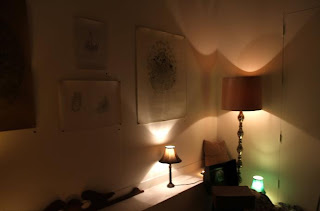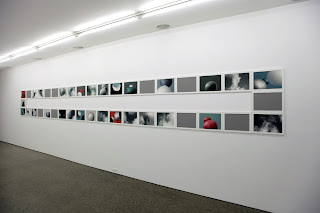To follow up from the success of Sparkadia’s 2008 album Postcards, main man Alex Burnett presents the Mary Tour to showcase new album The Great Impression released earlier this year. As an indication of the group’s trajectory, the last time they played in Brisbane was at Ricks some time after midnight, however on their return they’ve headed the bill at the Tivoli Theatre with a score of popular singles on the board.
 Peppy Canadian indie pop group Imaginary Cities warmed up the venue with their clean wholesome tunes and post-adolescent positivity, proving why they have had recent success on Canadian campus charts. Playing new material to an uninitiated audience, Imaginary Cities were quick to draw the crowd in close as lead singer Marti Sarbit’s spotless vocals sat cleanly atop chiming keys and cruzy guitar riffs. They were a fun, tidy outfit and were received well on their first visit to Brisbane.
Peppy Canadian indie pop group Imaginary Cities warmed up the venue with their clean wholesome tunes and post-adolescent positivity, proving why they have had recent success on Canadian campus charts. Playing new material to an uninitiated audience, Imaginary Cities were quick to draw the crowd in close as lead singer Marti Sarbit’s spotless vocals sat cleanly atop chiming keys and cruzy guitar riffs. They were a fun, tidy outfit and were received well on their first visit to Brisbane.The only original member of Sparkadia’s 2008 line-up, Burnett has returned from London with a newly formed line-up and a revitalised sound. The group has arrived at a punchy, pop heavy sensibility that reflects Burnett’s polished new album full of radio favourites and catchy choruses. The first song in Sparkadia’s set (and title track of the album) The Great Impression kicked off what was to be a strong performance by Burnett in which the clarity and force of his voice was impressive throughout.
Anthems like China, Love Less Love and Talking Like I’m Falling Down Stairs were sure crowd pleasers, but the best was reserved for current single Mary. The song has a huge sound when heard live. The thump of the beat was commanding when combined with a forceful lyric delivered with the help of female gospel singers. It is easy to become excited about the future of a band when these moments of electricity are experienced live.
Knowing only Sparkadia’s radio singles over the last few years meant that seeing them in concert was something of a new discovery. Their current outfit serves the strengths of their material with an engaging stage presence and convincing cohesion. With the Mary Tour wrapping up and Summer festival appearances still to come, Sparkadia are on the list of Aussie bands to keep an eye and an ear out for.
Dale Harding













